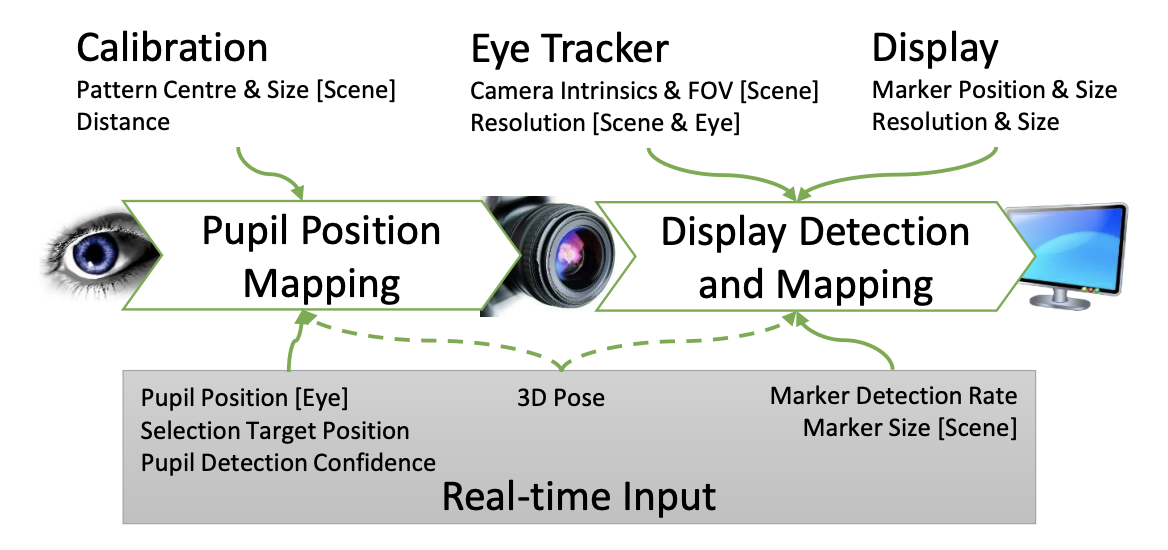Computational Modelling and Prediction of Gaze Estimation Error for Head-mounted Eye Trackers
Michael Barz, Andreas Bulling, Florian Daiber
DFKI Research Reports, pp. 1–6, 2016.

Abstract
Head-mounted eye tracking has significant potential for mobile gaze-based interaction with ambient displays but current interfaces lack information about the tracker’s gaze estimation error. Consequently, current interfaces do not exploit the full potential of gaze input as the inherent estimation error can not be dealt with. The error depends on the physical properties of the display and constantly varies with changes in position and distance of the user to the display. In this work we present a computational model of gaze estimation error for head-mounted eye trackers. Our model covers the full processing pipeline for mobile gaze estimation, namely mapping of pupil positions to scene camera coordinates, marker-based display detection, and display mapping. We build the model based on a series of controlled measurements of a sample state-of-the-art monocular head-mounted eye tracker. Results show that our model can predict gaze estimation error with a root mean squared error of 17.99 px (1.96^circ).Links
Paper: barz16_techrep.pdf
BibTeX
@techreport{barz16_techrep,
author = {Barz, Michael and Bulling, Andreas and Daiber, Florian},
title = {Computational Modelling and Prediction of Gaze Estimation Error for Head-mounted Eye Trackers},
volume = {1},
year = {2016},
pages = {1--6},
institution = {German Research Center for Artificial Intelligence (DFKI)}
}

